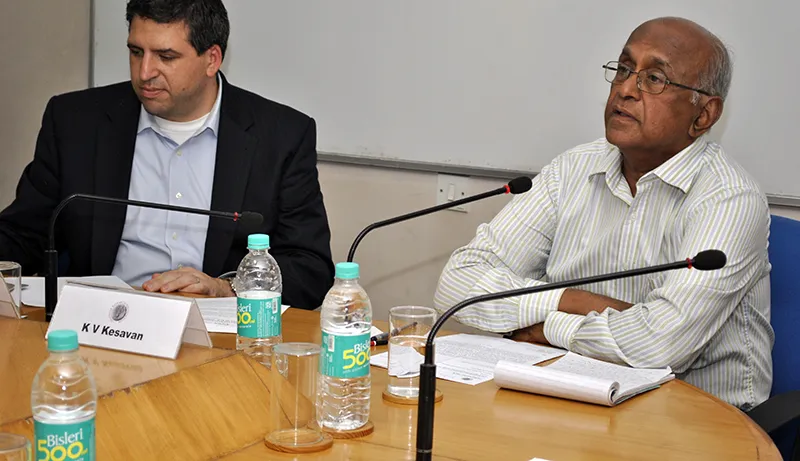-
CENTRES
Progammes & Centres
Location
The rise of new powers in Asia and the changing power distribution in the region is equally challenging for both the United States and its allies in the Asia Pacific region, according to Mr. Abraham M. Denmark, Vice President for Political and Security Affairs at The National Bureau of Asian Research.

The rise of new powers in Asia and the changing power distribution in the region is equally challenging for both the United States and its allies in the Asia Pacific region, according to Mr. Abraham M. Denmark, Vice President for Political and Security Affairs at The National Bureau of Asian Research (NBR).
Delivering a talk on "Strengthening the Asia-Pacific Order: The Future of US Alliances and Partnerships" at Observer Research Foundation, Delhi, on September 18, Mr. Denmark said to preserve the order, US has to work with its allies and partners in an overall networked fashion.
He disagreed with those who project the declining sustainability of American Power. He said that US power is incredibly resilient and sustainable and enduring in terms of its capacity and capability. To substantiate this, he mentioned the recession of 2008-09 where the tremendous American resilience was able to rescue the US from the financial crisis within two years.
Mr Denmark said "according to American theories, bipolarity is the most stable form, unipolarity is fairly stable and multipolarity is the least stable." Mr. Denmark’s presentation was mainly based on a project undertaken on US alliances and partnerships in the Asia Pacific. The main focus of his talk was on the concept and nature of order and power in today’s Asia Pacific Region and how the regional order gets affected with the nature of power distribution within the region. According to him, this happens due to the direct relation between the concepts of order and power.
Explaining the order and power situation in the Asia Pacific, he pointed out that the presence of several regional orders over the time made Asia enter a new phase of power distribution known as the post war Pacific. He mentioned this as an emergence of Asian hierarchy in which power is distributed across multiple dimensions of power. This complicates the overall planning and development of regional order. Mr. Denmark thus posited that the post war Pacific regional order was developed and sustained due to the hegemonic exercise of American power.
Mentioning the rank of superiority that dollar has in today’s economic world, he remarked that US will be able to add 4% of its annual GDP by 2020 since it has already replaced Russia as the supplier of natural gas. Compared to China, he said US has the most stable resilient economy. Also, the US has the most advanced and best funded military in the world.
On how to strengthen the relationship between US and its allies in Asia, he pointed out that allies and partners represent a tremendous opportunity for US to maintain the key aspects to maintain the regional order without unilaterally forcing them. The US and its allies can strengthen their ties mainly due to the common values and ideologies they share especially in areas of maintaining regional stability, International law and to bring about international peace and prosperity.
Earlier, chair Dr. K.V. Kesavan, in his introductory remarks, said that US which has underwritten the security of the Asia pacific region over 60 years, continues its presence in the region as the largest and strongest security factor despite its declining pre-eminence. He also pointed out that US which has forged number of bilateral relations with countries like Japan, Philippines and Australia etc has recalibrated some of the security terms of these countries to make them in tune with the changing security scenario in the region.
(This report is prepared by Sruthi R, Research Intern, Observer Research Foundation, Delhi)
The views expressed above belong to the author(s). ORF research and analyses now available on Telegram! Click here to access our curated content — blogs, longforms and interviews.